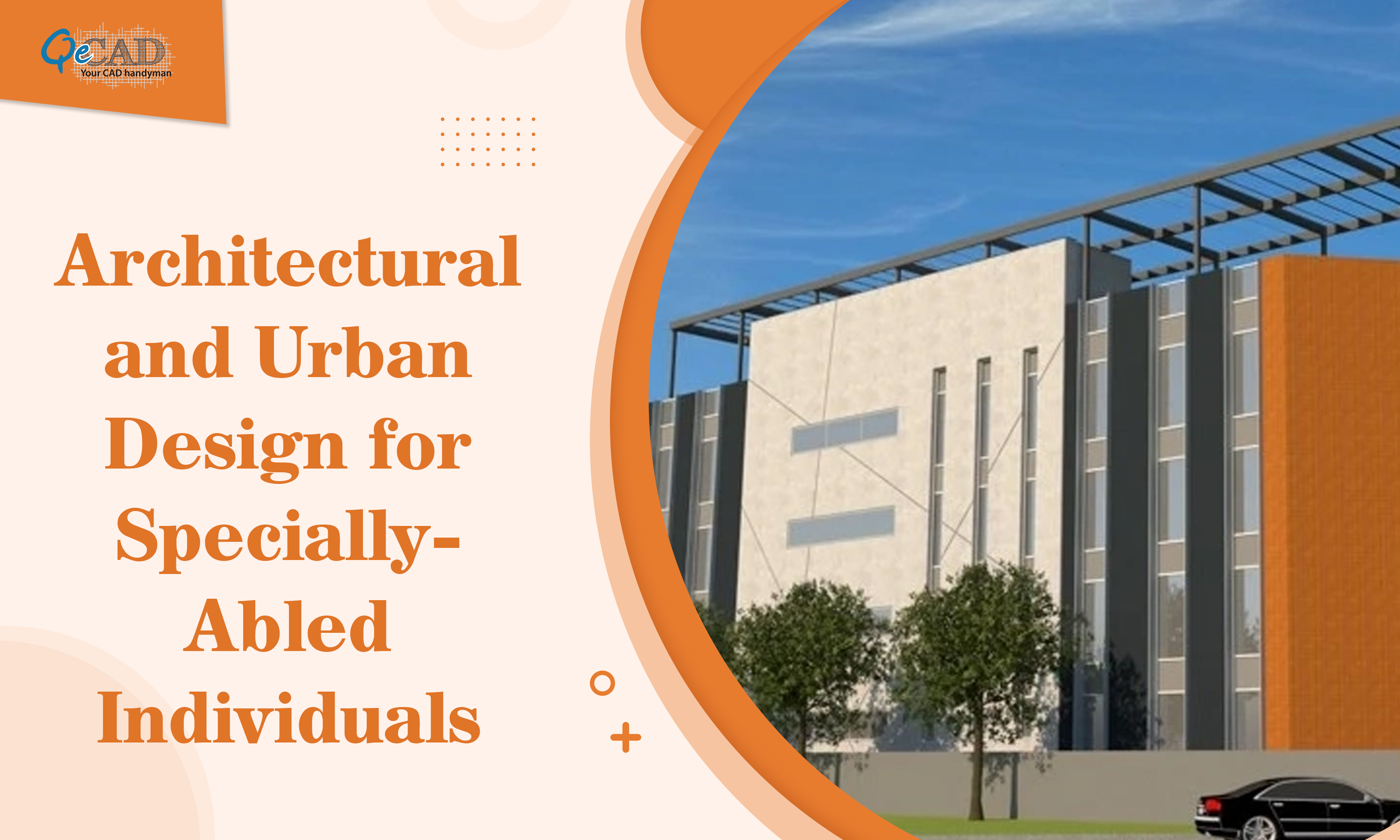
Introduction:
When considering the architecture and urban planning, the pursuit of inclusivity has become a central theme. As societies strive to create environments that cater to the diverse needs of their populations, special attention must be given to the design considerations for specially-abled individuals. The architectural and urban design choices we make today can significantly impact the accessibility and quality of life for those with physical or cognitive disabilities. The below article explores the key considerations and innovative approaches in creating spaces that are not just functional but embrace the principles of universal design.
Exploring the Frontiers of Inclusive Architectural and Urban Design
1) Accessible Architecture:
The foundation of any inclusive environment lies in its architectural design. To accommodate specially-abled individuals, architects must prioritize accessibility. This involves the implementation of ramps, elevators, and tactile pathways. Entrances ought to be sufficiently broad to facilitate wheelchair access, with minimal steps or hindrances.Moreover, considering varied mobility requirements, architects should incorporate features like accessible restrooms and facilities within the built environment.
2) Universal Design Principles:
Universal design is an approach that aims to establish spaces accessible to individuals of all abilities, eliminating the necessity for adaptation or specialized design. This goes beyond compliance with accessibility standards and emphasizes creating environments that are inherently inclusive. For instance, incorporating adjustable countertops in kitchens allows both wheelchair users and standing individuals to comfortably use the space. Applying universal design principles ensures that spaces remain functional and aesthetically pleasing for everyone.
3) Smart Technology Integration:
Technological advancements have created new opportunities to improve the quality of life for individuals with special abilities.Smart home systems, for example, can be integrated into architectural designs to offer greater control over the environment. Voice-activated controls, automated lighting, and temperature adjustments can significantly improve accessibility and independence for individuals with mobility or dexterity challenges.
4) Landscape and Urban Planning:
Cities and communities must also consider the needs of specially-abled individuals in their urban planning initiatives. Sidewalks should be wide, well-maintained, and equipped with curb cuts for easy wheelchair access. Public spaces, parks, and recreational areas should be designed with inclusivity in mind, providing accessible pathways, seating, and recreational equipment. Urban planners must prioritize the creation of a barrier-free environment that fosters community engagement for everyone using accurate and comprehensive BIM Services.
5) Sensory Considerations:
Apart from physical disabilities, it is essential to consider the requirements of individuals with sensory impairments. Architectural and urban designs should incorporate elements that cater to the visually or hearing impaired. Tactile paving, audible signals at crosswalks, and braille signage are examples of features that enhance accessibility for those with sensory challenges.
6) Community Engagement:
Successful inclusivity in architectural and urban design is not solely a technical matter but also involves community engagement. It’s essential to involve specially-abled individuals in the design process to gain insights into their unique needs and preferences. This collaborative approach ensures that the built environment reflects the diverse requirements of the community it serves.
7) Educational Initiatives:
Architects, urban planners, and developers should actively engage in educational initiatives to raise awareness about the importance of inclusive design. By fostering a deeper understanding of the challenges faced by specially-abled individuals, and by utilizing Architectural BIM Services effectively, the industry can work towards breaking down barriers and incorporating inclusive practices as standard.
Smart Spaces, Inclusive Places: Revolutionizing Design for Specially-Abled Individuals
In the pursuit of creating inclusive spaces for specially-abled, architects and urban planners play a pivotal role. By embracing accessible architecture, universal design principles, smart technology integration, thoughtful urban planning, and sensory considerations, we can build environments that cater to the diverse needs of our communities. It is not only a matter of compliance with regulations but a commitment to creating spaces that empower individuals of all abilities to lead fulfilling and independent lives. As the AEC professional continue to evolve in the understanding of inclusivity, the built environment can become a symbol of progress, reflecting the values of a society that embraces diversity and equality.
